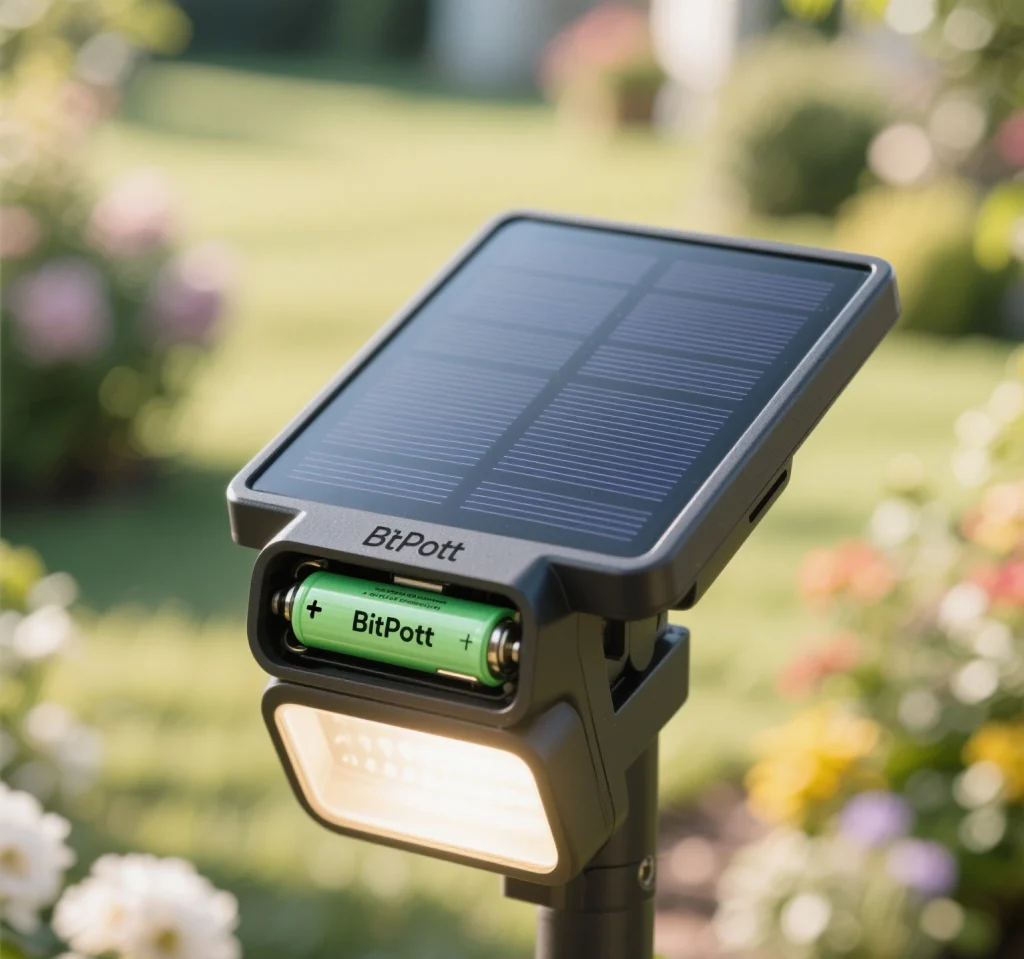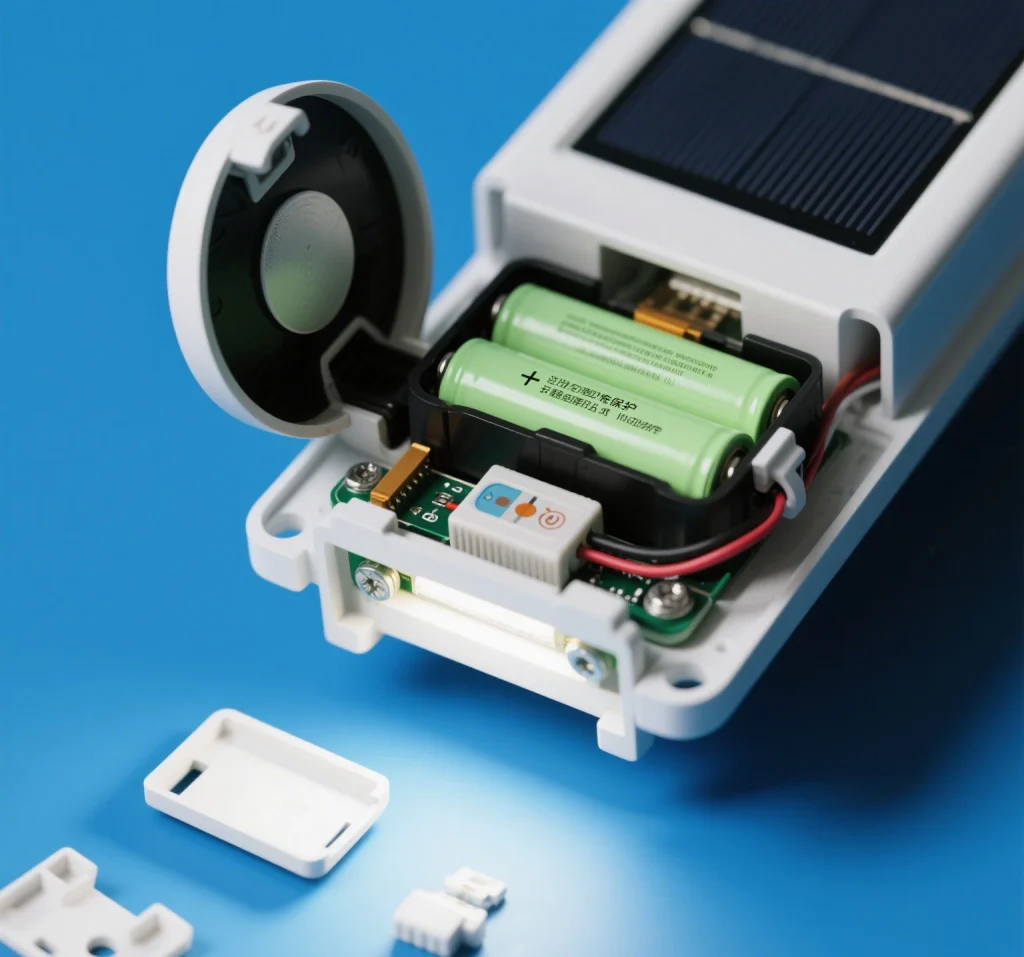As homeowners increasingly turn to solar lights for eco-friendly outdoor illumination, the need for cost-effective power solutions grows. Rechargeable AA batteries offer a sustainable way to cut costs while powering solar lights, providing long-term savings compared to disposable batteries. This article delves into how rechargeable AA batteries reduce expenses, offers guidance on how to choose suitable batteries, provides maintenance tips to extend battery lifespan, and includes a performance comparison with disposable batteries.
Why Rechargeable AA Batteries Cut Costs for Solar Lights
Solar lights rely on batteries to store energy captured during the day for nighttime use. While many solar lights come with built-in rechargeable AA batteries, these may degrade over time, requiring replacement. Opting for high-quality rechargeable AA batteries can significantly cut costs by reducing the need for frequent replacements associated with disposable batteries.

A single rechargeable AA battery can be recharged 500-1,000 times, offering years of use compared to disposable batteries, which are discarded after one cycle. For a set of 10 solar lights, replacing disposable batteries annually could cost $20-$50, while rechargeable AA batteries might cost $15-$30 upfront but last 3-5 years. This translates to long-term savings of hundreds of dollars over the lifespan of your solar lights.
Additionally, rechargeable AA batteries align with the eco-friendly ethos of solar lights. By reducing waste from disposable batteries, you contribute to a greener planet while saving money. Modern rechargeable AA batteries, such as nickel-metal hydride (NiMH) models, are designed to handle the charge-discharge cycles of solar lights, ensuring reliable performance and further enhancing long-term savings.
How to Choose Suitable Batteries for Solar Lights
Selecting the right rechargeable AA batteries is critical to maximizing the efficiency and longevity of your solar lights. Here’s a guide to help you choose suitable batteries:
- Battery Chemistry: Opt for NiMH rechargeable AA batteries, as they are ideal for solar lights due to their ability to handle frequent charging cycles. Avoid nickel-cadmium (NiCd) batteries, which have a lower capacity and contain toxic materials.
- Capacity Rating: Look for batteries with a capacity of 1,800-2,500 mAh (milliampere-hours). Higher-capacity batteries store more energy, ensuring your solar lights stay illuminated longer, especially during cloudy days or winter months.
- Low Self-Discharge (LSD): Choose LSD NiMH batteries, which retain their charge when not in use. These are labeled as “pre-charged” or “ready-to-use” and are perfect for solar lights that may not receive daily sunlight.
- Brand Reliability: Invest in reputable brands like Eneloop, Ansmann, or Energizer. These batteries are tested for durability and consistency, reducing the risk of premature failure in your solar lights.
- Compatibility: Ensure the battery size (AA) and voltage (typically 1.2V for NiMH) match your solar lights’ requirements. Most solar lights are designed for standard AA batteries, but always check the manufacturer’s specifications.
- Charger Compatibility: Pair your rechargeable AA batteries with a smart charger that prevents overcharging. Look for chargers with individual slots to ensure each battery is charged optimally.
By carefully selecting rechargeable AA batteries, you ensure compatibility, performance, and long-term savings for your solar lights.
Maintenance Tips to Extend Battery Lifespan
To maximize long-term savings and performance, proper care is essential to extend battery lifespan. Here are practical maintenance tips for your rechargeable AA batteries:
- Regular Cleaning: Inspect the battery compartment of your solar lights every 3-6 months. Clean any dirt or corrosion from the terminals using a cotton swab and rubbing alcohol to ensure a strong connection.
- Avoid Over-Discharging: Remove batteries from solar lights during extended periods of non-use (e.g., winter storage) to prevent deep discharge, which can reduce capacity.
- Charge Properly: Use a smart charger that automatically stops when batteries are full. Overcharging can degrade rechargeable AA batteries, shortening their lifespan.
- Store Correctly: Store unused batteries in a cool, dry place (ideally 50-70°F or 10-21°C) to minimize self-discharge. Avoid extreme heat or freezing temperatures, which can damage batteries.
- Cycle Periodically: Every 3-4 months, fully discharge and recharge your batteries to maintain their capacity. This “refresh cycle” prevents memory effect in NiMH batteries.
- Replace Timely: Most rechargeable AA batteries last 3-5 years or 500-1,000 cycles. Replace them when you notice reduced brightness or runtime in your solar lights.
By following these maintenance tips, you can extend battery lifespan to 5 years or more, further helping to cut costs and ensure consistent performance.
Performance and Savings: Rechargeable vs. Disposable Batteries
A performance comparison between rechargeable AA batteries and disposable batteries highlights why the former is the better choice for solar lights. Here’s a breakdown:
- Energy Efficiency: Rechargeable AA batteries (NiMH) deliver a steady 1.2V, ideal for solar lights, while disposable batteries (alkaline, 1.5V) may provide inconsistent voltage as they deplete, leading to dimmer light output. NiMH batteries also recharge using solar energy, aligning with the eco-friendly design of solar lights.
- Lifespan: A rechargeable AA battery can be cycled 500-1,000 times, equating to 3-5 years of daily use in solar lights. Disposable batteries last 1-6 months, depending on usage, requiring frequent replacements.
- Cost Analysis: A pack of 4 rechargeable AA batteries costs $10-$15, with a charger costing $15-$30. For 10 solar lights, the initial investment is ~$25-$45. In contrast, disposable batteries cost $1-$2 each, and replacing 10 batteries annually could cost $10-$20 per year. Over 5 years, disposable batteries could cost $50-$100, while rechargeable AA batteries save ~$25-$75, factoring in the charger.
- Environmental Impact: Rechargeable AA batteries reduce waste, as one battery replaces hundreds of disposable batteries. In the U.S., over 3 billion batteries are discarded annually, contributing to landfill pollution. Switching to rechargeables supports sustainability and cuts costs.
- Reliability: Rechargeable AA batteries with LSD technology retain 70-85% of their charge after a year of storage, making them reliable for solar lights in seasonal climates. Disposable batteries lose charge faster and may fail during extended cloudy periods.
For example, a homeowner with 12 solar lights might spend $36 annually on disposable batteries (12 batteries x $3). Switching to rechargeable AA batteries requires a one-time cost of $30 for batteries and a charger, with negligible ongoing costs. Over 5 years, this results in long-term savings of ~$150, alongside better performance and environmental benefits.

Additional Benefits of Rechargeable AA Batteries
Beyond cutting costs, rechargeable AA batteries offer versatility. They can be used in other household devices, such as remote controls or flashlights, maximizing their value. Their compatibility with solar lights ensures seamless integration, and advancements in NiMH technology have improved their charge retention and durability, even in extreme weather.
For solar lights exposed to variable conditions, rechargeable AA batteries provide consistent power, ensuring your garden or pathway remains illuminated. Their reusability also reduces the hassle of frequent battery purchases, making them a convenient choice for busy homeowners.
Conclusion
Rechargeable AA batteries are a game-changer for solar lights users looking to cut costs and achieve long-term savings. By carefully choosing suitable batteries, following maintenance tips to extend battery lifespan, and understanding their superior performance compared to disposable batteries, homeowners can save money while enhancing the efficiency of their solar lights. With an initial investment that pays off within a year, rechargeable AA batteries offer a sustainable, reliable, and cost-effective solution. Make the switch today to power your solar lights smarter and greener.


Leave a Reply